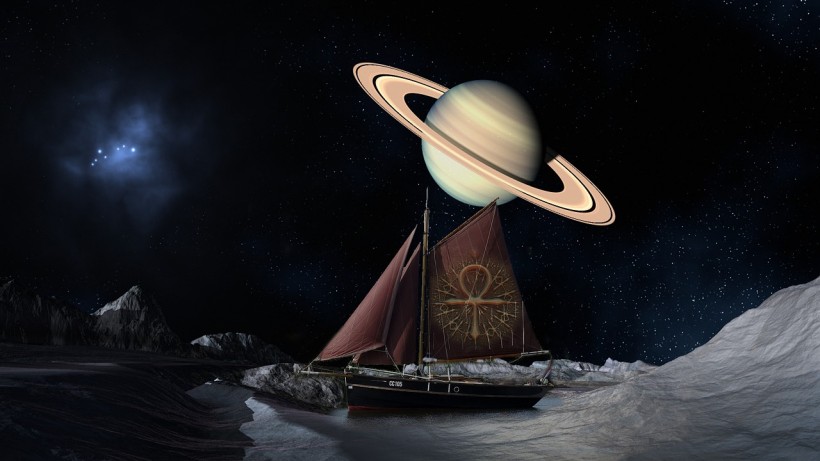The formation of Saturn's rings, one of the solar system's most distinctive characteristics, has long been the subject of debate. Recent discoveries suggest that the spectacular rings might have formed through the death of an icy moon.
Saturn's system is dynamic. Gizmodo said one of its moons, Titan, is quickly eloping from the planet at approximately 4 inches (11 cm) yearly, in addition to its exciting rings. The process causing Saturn's tilt remains unknown. However, it is tilted at 26.7 degrees off the plane of its orbit, which is not unusual in our solar system.
According to a study published in Science, the missing piece that might tie all these occurrences together may be a now-extinct ice moon of Saturn named Chrysalis.
An Old Saturn Moon Might Have Put a Ring on The Planet
According to NASA, Saturn has 82 moons right now. The study team hypothesized that the ringed planet may have formerly had another one that spent a few billion years around it.
However, this moon became unstable some 160 million years ago. It swung too near Saturn, shattering the moon in what the astronomers called a "grazing encounter."
The scientists hypothesized that while the gas giant probably devoured 99 percent of the moon, the remaining one percent remained hanging in space and broke into tiny frozen pieces that eventually created the planet's rings.

NASA Shared Its "Visions of the Future" Video Featuring Kayaking on Saturn's Moon Titan, Skydiving in Exoplanet
ALSO READ: Saturn's Moon Enceladus' Phosphorus Discovery Offers Evidence of Potential Extraterrestrial Life
Though their age is a widely contested subject, previous studies have indicated that Saturn's rings were 100 million years old, making them far younger than the planet itself. This most recent study offers a possible justification for their later genesis.
"A variety of explanations have been offered, but none is totally convincing. The cool thing is that the previously unexplained young age of the rings is naturally explained in our scenario," said study author Jack Wisdom, a professor of planetary science at the Massachusetts Institute of Technology, in a news release (via CNN).
How Experts Unveiled Such a Discovery
Using some of the last observations made by Cassini during its Grand Finale, a phase of the mission in which the spacecraft made an extremely close approach to precisely map the gravitational field around the entire planet, Wisdom and his colleagues sought to determine Saturn's moment of inertia in their new study.
Newsweek said mass distribution on a planet might be calculated using the gravitational field.
When Wisdom and his coworkers recreated Saturn's interior, they found a mass distribution that matched the gravitational field that Cassini had detected.
Surprisingly, scientists discovered Saturn was near but just outside the resonance with Neptune at this newly discovered point of inertia. The planets may have been in synchronicity previously, but not now.
The group did simulations to see whether any natural instabilities among the current satellites would have affected the planet's tilt. This search turned up nothing.
To better understand how a planet's axis of rotation shifts over time, known as precession, the researchers reexamined the mathematical equations that explain it.
They concluded that Saturn's current tilt resulted from its resonance with Neptune and that its escape from the resonance was made possible by the loss of the satellite Chrysalis, roughly the size of Saturn's third-largest moon Iapetus.
According to the experts, Chrysalis entered a turbulent orbital zone between 200 and 100 million years ago.
RELATED ARTICLE: NASA Juno Spacecraft Shares Colorful Photos of Jupiter [LOOK]
Check out more news and information on Space in Science Times.



![Earth's Quasi-Moon Kamo‘oalewa Could Originate From Lunar Surface Not Asteroid Belt [Study]](https://1721181113.rsc.cdn77.org/data/thumbs/full/53275/89/56/50/40/earths-quasi-moon-kamo-oalewa-could-originate-from-lunar-surface-not-asteroid-belt-study.png)










